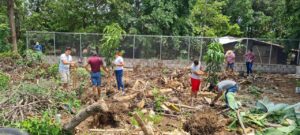“I felt I had a commitment to the community.”
Esta historia se escribe en Español = This story is also written in Spanish here
Editor’s Note: The term community as it is used in El Salvador goes far beyond any casual English definition. We Americans tend to be fluid in terms of moving from one community to another without really establishing roots or forming lasting relationships.
In El Salvador a rural community implies such a tight-knit mindset of oneness and bonding that it takes on a nearly sacred overtone. Perhaps knowing the country’s history explains one of the reasons that these groups have come to rely on each other to live in community. Their trust and decisions come from a common ground and guide their actions. No one acts as an individual; all act together for the sake of the group. From an outsider’s perspective community is a cohesive, well-oiled machine built on mutual respect.
I base this story upon COMMUNITY. This storyteller slurred over his first name only and I re-wound the tape a dozen times trying unsuccessfully to catch it; then I realized he purposely chose not to identify himself. His personal story is unimportant in his eyes. In fact, he rarely mentions his own family until my partner quizzes him directly near the end of the interview. His preference is to share a much larger story — the story of his community. That is the story he wishes to convey.
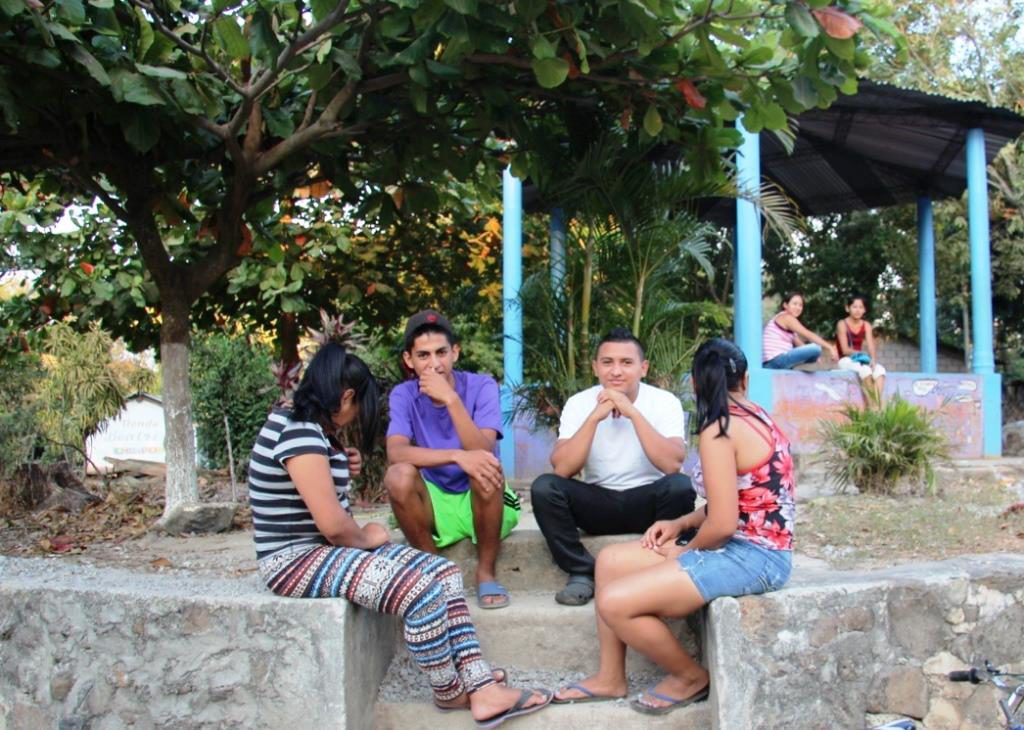
A community of rural farmers living in poverty needs to survive. They must flee their country, organize themselves in a refugee camp, negotiate the terms under which they can return to El Salvador at the height of its war, and re-settle together as a COMMUNITY. These require conviction. These require commitment. These require trust in its leaders. Our narrator humbly identifies himself as “one of the founders of the Papaturro COMMUNITY.”
Our community made the decision to flee our homes, our farms, our livelihoods. Why? When the military can kill the bishop, they can kill anyone! [This refers to the assassination of Archbishop Oscar Romero on March 24, 1980].
A bit of back story helps frame the situation. – El Salvador’s dictators and presidents of the country who were in power for hundreds of years were always determined by others rather than by its people. It was clear to us working people that those leaders defended only the interests of the wealthiest families [often referred to as the oligarchy or the 14 families], so groups began to organize and protest against this practice in the late 1970s. The repressions by the military were building up against these organized sectors including the unions, teachers, students, campesino workers who were demonstrating on the streets against the exploitation and injustices occurring. One of the police bodies, the National Guard, was a repressive authority that began intimidating then capturing the leaders of those groups. Later they and other military groups began disappearing them, torturing and killing them. Later priests were being targeted and killed.
When we 7,000 farmers in the Cabanas and Chalatenango Departments (northern part of El Salvador) were threatened and massacres were occurring in nearby villages, our community made the decision to flee into nearby Honduras in March. This involved crossing the Lempa River. We campesinos typically do not know how to swim, so we used whatever means we could find to get across it including lassos and tires.
5,000 soldiers serving as part of the “Scorched Earth” operation were determined that we would not make it into Honduras. They were bombing the river at the border. Members of our community were looking after one another’s children as families were split up during the chaos that ensued during the attacks. I was 35 years old with five children and lost one of them crossing the river as we all scattered during the bombings. It wasn’t until sometime late the next day in Honduras that a priest showed up with my missing child whom he had found.
Our community managed to flee our country to what we thought was safety only to discover the Honduran army was capturing many people when we arrived. These soldiers were often complicit with the Salvadoran soldiers. What worked to our advantage was international presence from people of other churches watching what was happening. In our case they were taking photos of 300 soldiers killing Salvadorans and accusing the citizens of being subversives and guerrillas. We were simply men and women with no political agenda. The international solidarity witnessing events such as Honduran soldiers capturing young Salvadoran guys perceived to be leaders forced them to release the Salvadorans lest the UN get involved. We were so grateful for their presence.
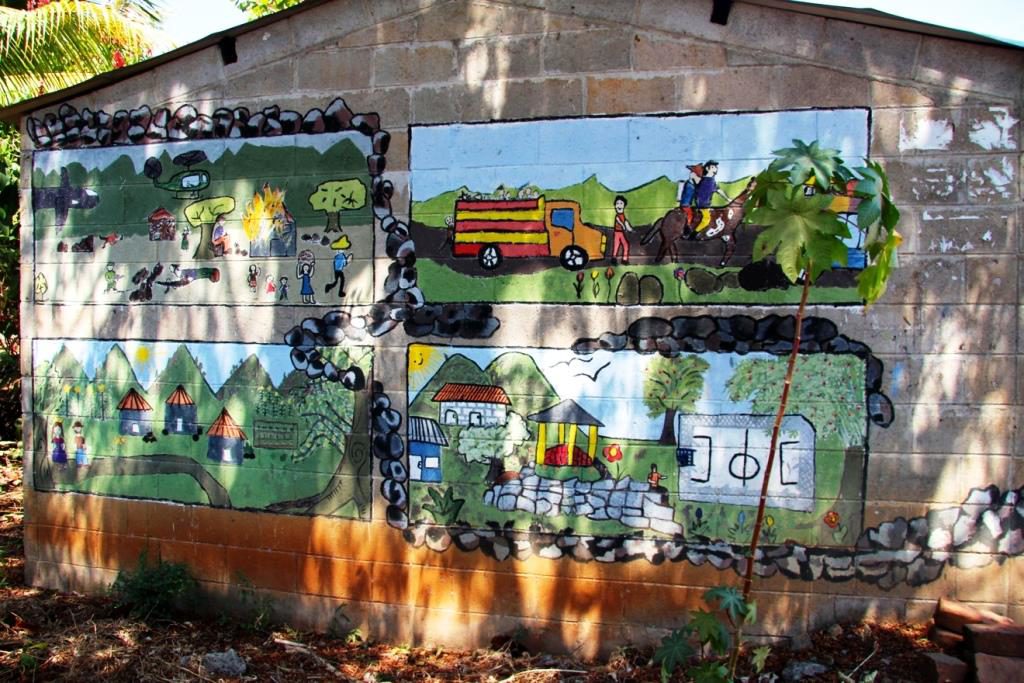
We had escaped with only the clothes on our backs. Our community built small, basic tents on donated space, and the Catholic Church and UN Commission provided us with relief and food. Many Honduran families tried to help us. We spent a year close to the border but it was too close and problems persisted because of that proximity. The Salvadoran National Guard continued to come across the border causing us problems.
The UN decided to move the refugee camps 50 km further inside Honduras. They put 12,000 of us into a refugee camp that looked like a small city where we each used our own set of skills to work for the greater good. There were those with technical skills, gardeners who planted food that was stored in a warehouse to distribute to everyone, teachers and shoemakers. Forming an adapted community is how we survived together despite living in a confined area.
By 1985 or 1986 (still the middle of the Salvadoran civil war) the UN no longer saw our needs as being a top priority and gave us the choice of becoming Honduran citizens or return to El Salvador. We are Salvadorans, and we gave no consideration to becoming Honduran citizens. Despite the war continuing, we knew we had to return home together in community.
The question we had was how to go about returning to our war-torn country that caused us to flee without falling into the same situation we had left. We chose COMMUNITY leaders to find ways to repatriate successfully without risking repercussions by the military. I worked within the re-population committee.
We asked two groups to work on our behalf to help us negotiate a safe return. The first, CRIPDES is a national and international grassroots organization set up in 1984 in the rural Salvadoran communities to accompany refugees displaced and living outside the country. They helped in the “Going Home Campaign.” Second, we asked the Archbishop’s office of the Roman Catholic Church to be involved.
Our community leaders listed eight different conditions under which we would return to El Salvador. We spent a full year negotiating until we felt comfortable in returning. We asked the UN to negotiate with both the Honduran and Salvadoran governments on our behalf as to the best way to return. We shared this list with a number of human rights groups.
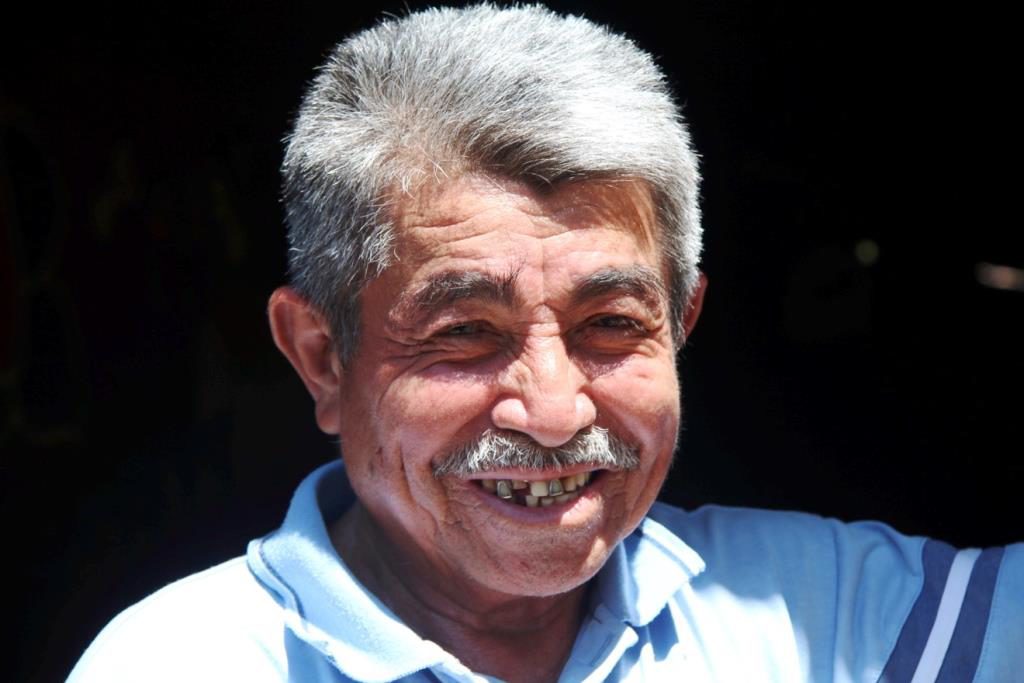
The Salvadoran government did not want us to return in large groups. They wanted to issue permits to individual families to return by helicopter three or four families at a time. Our COMMUNITY ignored that proposal because it did not guarantee our safety.
Instead we made the decision that we would not return individually which we felt was too dangerous and put us at risk for capture. Instead we would return in large groups to ensure safety for all. The sizes ranged from 1,000 – 2,000 at a time.
One sticking point was transportation; no one wanted to provide it for our large groups possibly assuming they could wear us down into breaking up into smaller units. We told them we would walk together in groups if necessary. When the Salvadoran and Honduran governments saw our strong conviction to remain in community, they agreed to bus us.
Another important point was that when we returned, we wanted our young men exempt from the draft. We would be spending much time getting re-settled and did not want this stress on top of everything else.
We asked that the Salvadoran government please respect the life of the communities and not interfere by bombing as we planted our food, built our homes, etc. We wanted them to respect our dignity. We asked that the government respect our integrity to work freely without fear and to move within the country freely because this is OUR country.
On October 10, 1986, the first of our groups began returning to El Salvador. We received much international media coverage which added to our safety. The presence of reporters, international human rights members, and members of churches at the border put pressure on the government to make sure we crossed safely together as communities.
In the late 1980s the U.S. citizenry began questioning its role in funding of the civil war. The Salvadoran government did not want Americans to be aware of all the massacres, so it cut back on the violence. At the same time there was the birth of sister city relationships between the U.S. and Salvadoran cities being paired for needs.
We were too large for any one community but large enough to travel safely and re-settle. We began to repatriate in Copapayo, Cuscatlan Department, Santa Marta and Victoria, Cabanas Department, Guarjila, Chalatenango Department.
Our group settled in Santa Marta, where we saw no military presence at first. Later as we worked in the fields, we needed to run to avoid being hit by crossfire from machine guns. One member of our group was captured on his way to another town. This action required the community to go together to the armed forces and ask them to stop. A young U.S. kid helping us and working for the Catholic Church was about to be captured, also. The entire community approached the military and announced, “If you are taking him, you are taking all of us to prison.” They released him and finally left the area. That gave us strength. The peace negotiations were now beginning (Peace Accords in 1992.)
Now Santa Marta was becoming too crowded. Our community needed more land to settle and plant. We decided it was advantageous to start another community, so 25 families chose to migrate from there to Papaturro. Within three years the area grew to 40 families and continued to grow. (The agreement during the war was that abandoned haciendas could be used to plant on while negotiations were taking place.) There was an abandoned hacienda in Papaturro that the priest of the Suchitoto Catholic Church blessed with a mass for us. Six months later the owners of that hacienda returned wanting their land. They blamed the priest for his involvement, although he said he was merely accompanying the people in their struggles. We said we were looking for a safe place and asked the archbishop’s office to negotiate a sale of the land. We did not know who the owner was; we did not want the land given to us nor did we intend to steal it; we wanted to purchase it legally. (This family owned many other haciendas in the area.)
In the meantime the Peace Accords took place compelling the UN to create a land bank to issue bonds to allow campesinos to buy land with them. The land was appraised for its value, and then the community put all its combined bonds toward the purchase of a parcel of land. In this case it amounted to 30,000 colones per bond/per family (not cash) deposited in the land bank. Sixty-nine families came together to purchase this hacienda with the money allocated in the Peace Accords. This still was not enough land for everyone, so we needed to find additional land to annex for all of us.
We had many meetings with the land bank representative to use the land pro-rated as community property. We hired an architect to map out the area and work out the details to distribute the area as equitably as possible taking into account the topography of the land itself – tillable land vs. rocky land. Every family would receive three manzanas – some flat and some hilly land and an area for each house. He made a map divided into 69 squares to show each family how it would be divided. Together we chose to keep a reservation for forest preservation and to keep a social area. We explained every detail to the whole group; thus, everyone was part of the process. We agreed as a community that what we got, we got, and each of us had to commit to agree to it. There would need to be consensus by ALL. The last step was for a surveyor to measure it all out. This was a successful process, although it took five years. Each family received a deed. However, when the money came through as a loan, the whole COMMUNITY went to the government protesting that the funding had been given as donations and should not be a loan. The officials forgave the loans.
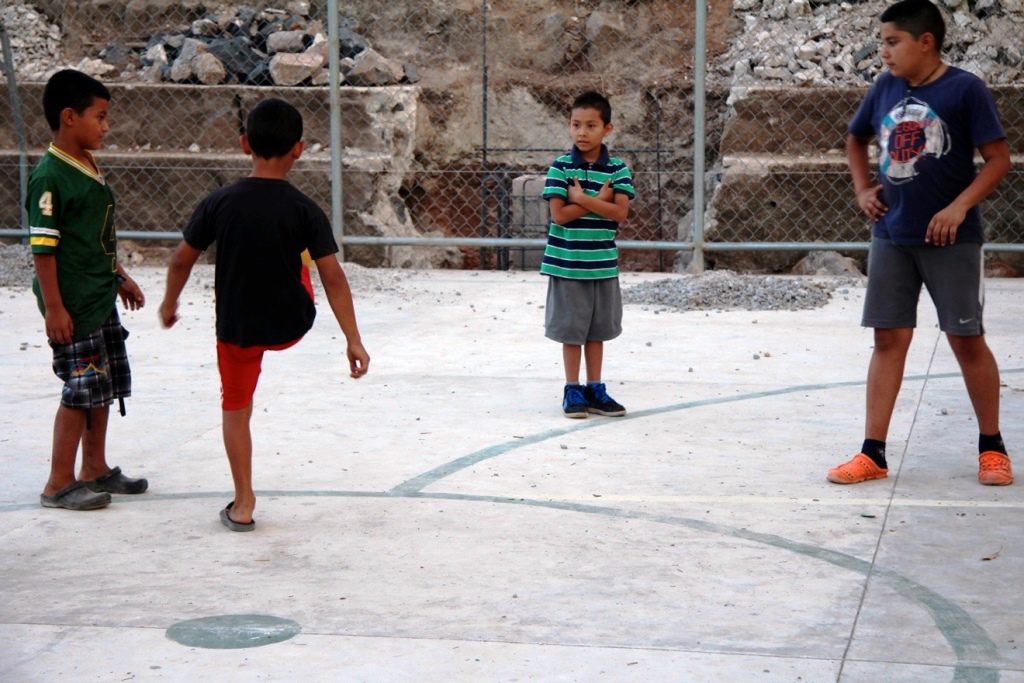
That is the story of how the COMMUNITY of Papaturro originated.
Editor’s Note: My partner raises this question. “Many others in your situation from your area chose to serve in the FMLN during the war. Why not you?”
His response: “I felt I had a commitment as a community leader to act politically to lead my community, to negotiate on their behalf in mobilizations, coordinating re-settlements, etc. I had to negotiate with FMLN guerrilla forces when we were returning to the country. That role appealed to me. Age was part of it; I had a different profile. “
[Exiling at age 35 and returning at age 42, this humble gentleman has incredible stamina, energy to plan, negotiate, and accomplish all he did here!]
After further probing, he revealed that he has six children including a daughter studying medicine in Venezuela, three living in the U.S., two living in El Salvador . . . and raising four more non-biological children.
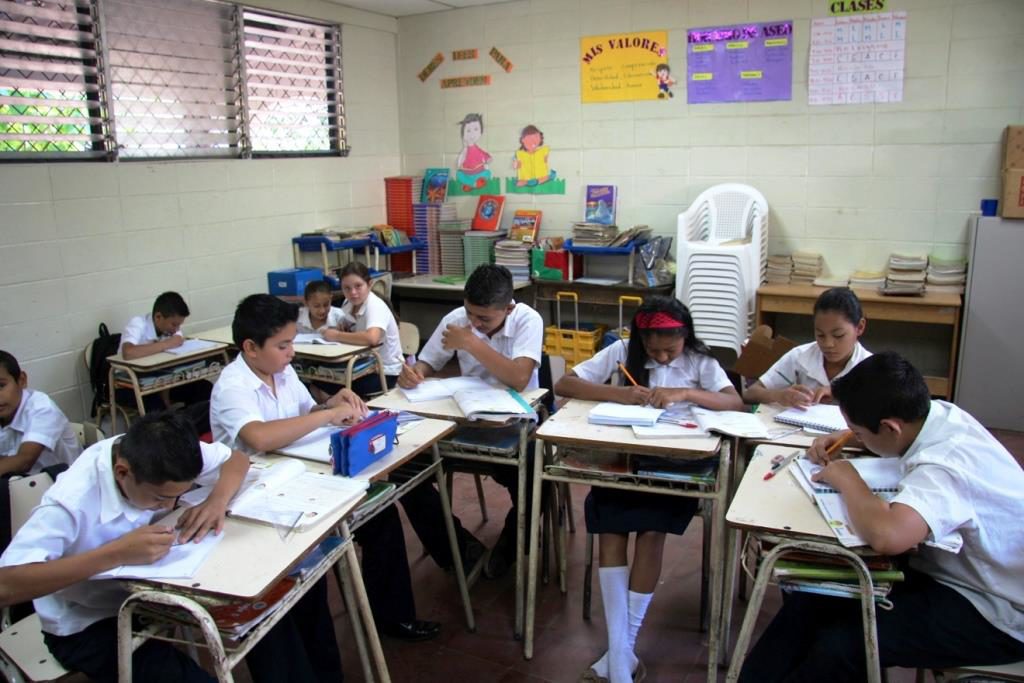
Community youth attend school morning and help in the fields in the afternoon


